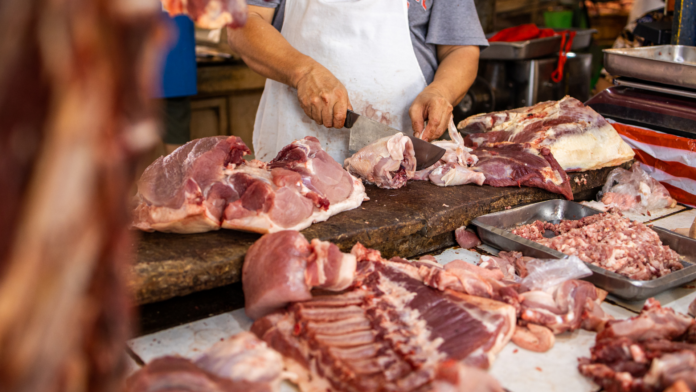Noting that pork prices remain high despite lower tariff on imports, Senator Francis “Kiko” Pangilinan wants tariffs restored to its original 20- to 30-percent levels and help hog-raisers recover from the African swine fever that wiped out their stocks.
“Tatlong buwan na nang ibinaba ang taripa sa baboy, pero mataas pa rin ang presyo ng baboy sa palengke. At hirap pa rin ang mga Pilipinong magbababoy (Three months since pork tariffs were reduced, pork prices are still high. And our local hog-raisers are still suffering),” Pangilinan said.
“Mukhang nakalista sa tubig ang pangakong bababa ang presyo ng baboy. Kaya naman sa pagbukas ulit ng Kongreso, ibabalik ko ang panukalang itaas ulit sa original rate ang taripa para sa mga imported na baboy (The promise of lower pork prices has not been fulfilled. That’s why when Congress reopens, I will raise again my recommendation to raise tariffs on imported pork to original rates),” he added.
Available date from the Department of Agriculture showed that as of July 9, the prevailing price per kilogram of pork ham (kasim) was P340, while that of pork belly (liempo) was at P380. Prices previously hit as high as P400.
“Mataas pa rin ang P380. Bago mag-ASF, mga P240 ang kilo ng baboy. Suportahan natin ang ating mga magbababoy. Bigyan natin sila ng konting laban. Sa taripa natin ngayon, mga importers lang ang masaya. Ang mga Pinoy, pork diet pa rin dahil sa taas ng bilihin (Three-hundred eighty is still high. Pre-ASF, pork per kilo costs about P240. Let’s support the local hog raisers and give them a fighting chance. With our current policy, only the importers are smiling while Filipino consumers continue to be on pork diet because they could not afford the high prices),” he added.
In April, Executive Order 128 reduced the tariff rate on imported pork within the minimum access volume (MAV) from 30 percent to 5 percent in the first three months and to 10 percent in the 4th to 12th month. Tariff on pork imports outside the MAV was reduced from 40 percent to 15 percent for the first three months, then 20 percent for the succeeding nine months.
The order was signed as the national government sought to curb rising pork prices and inflation due to the African swine fever, which hit several local hog raisers, affecting supply.
About a month later, Executive Order 133 was released, modifying the tariff rates on imported pork products. The new tariffs on pork imports under the minimum access volume (MAV) would be 10 percent for the first three months, and 15 percent in the next nine months. The tariff for pork imports outside MAV would be reduced to 20 percent for the first three months and 25 percent in the succeeding months.
The new rates were the result of a compromise between the country’s economic managers and senators who had raised local hog raisers’ concerns about the tariffs set in EO 128.
Foregone revenues due to lower tariffs could reach P11.2 billion this year.
Pangilinan said taxes that should have been collected from imported pork could have been used to assist more hog raisers earlier hit hard by the African swine fever.
“Pwedeng ipagmalaki ng DA na maraming imported pork sa mga supermarket. Pero sino ang kayang bumili? Sino ang bumibili? Ang tanong — gumana ba ang polisiya para sa mga Pilipinong mamimili at sa Pilipinong magbababoy? (The Department of Agriculture can boast about flooding the supermarkets of imported pork, but who can afford them? Who buys them? The question remains — did touted government policy worked for the Filipino consumers and the local industry?),” Pangilinan said.


